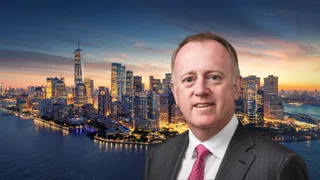
Renewals will mean a rethink on what passes for adequate pricing
As the reinsurance industry readies its Zoom accounts for another Monte Carlo Rendez-Vous (conducted from a distance due to the pandemic), the lack of face-to-face contact is unlikely to dampen the urgency of the upcoming discussions.
After another year of uncertainty, and with issues ranging from cyber attacks to climate change looming over the market in the long term, the reinsurance industry kicks off the yearly negotiations cycle with a raft of issues to address and rate discussions to be had.
Speaking at the Re/insurance Lounge, Intelligent Insurer’s online, on-demand platform for interviews and panel discussions with industry leaders, Swiss Re chief executive officer Reinsurance Moses Ojeisekhoba outlined what the market can expect from the talks.
“As a result of greater awareness, exposure is growing, which will fuel growth in the industry overall.” Moses Ojeisekhoba, Swiss Re
Shifting tides
While the pandemic has dominated the trajectory of the economy over the past 18 months, there are other factors at play that exert influence on reinsurance pricing which are likely to persist long after the worst of the virus—and its impact on society—has passed.
Extreme weather events in the US, most notably the recent devastation wrought by Hurricane Ida and predictions of another Atlantic storm season—as well as the emergence of wildfires as a yearly phenomenon—have prompted a rethink on what passes for adequate pricing, according to Ojeisekhoba.
That thinking is factoring into discussions around the renewals, prompting increased scrutiny from buyers over how secure their own programmes and protections really are.
“These events speak very strongly about the need for insurance and reinsurance—and the industry as a whole. Also, the need for us, as the providers of the capacity and capabilities, to be resilient,” Ojeisekhoba said.
“That’s one topic in the backdrop. We’re also in the middle of a pandemic that simply doesn’t want to abate, which also has a clear impact on the broader macro-economic environment and implications for insurance and reinsurance.
“Some of those impacts are positive in the sense that there’s now a greater awareness of the issues. People want to buy more insurance and reinsurance. As a result of greater awareness, exposure is growing, which will fuel growth in the industry overall.”
The pandemic has prompted some uptick in pricing for the reinsurance market, with reports across the industry noting an increase in rates as the economic turmoil from the past year has taken its toll on carriers and clients alike.
However, Ojeisekhoba believes, the sector has retained its attractiveness to capital providers, with more forms of investment coming into the market from a variety of sources. As exposure grows, capacity remains available for the risks at hand.
“If you look at the pandemic, the industry hasn’t lost that much capacity. If you took a longer time frame and analysis, you would see that capacity and capital in the industry have continued to grow. And rightfully so, because at the same time, the exposure the industry is trying to cover has continued to grow,” he said.
“If I forecast into the next 10 years, I expect more capital to continue to come in, whether it’s from traditional players in the industry, raising more money, new capital or alternative forms of capital. The challenge is that everybody expects a return on that capital.
“The returns may vary from one player to another, but is not massively different. More important is ensuring that the returns relative to the risks that have been taken are adequate—relative to whoever the capital provider happens to be. That’s healthy for the industry.”
For more content like this visit the Reinsurance Lounge
“There is always a need for carriers to clearly define the limits of coverage or risk similar situations emerging in the future.”
Setting the limits
The COVID-19 pandemic has been a substantial—and, in many cases, expensive—reminder of how things can go wrong when the industry fails to price the risk it is taking or precisely define the terms of its relationships with clients.
Many businesses have been left in limbo over how much is involved—even if they could claim against their insurance coverage for losses incurred due to the impact of the pandemic. Ojeisekhoba warned that there is always a need for carriers to clearly define the limits of coverage or risk similar situations emerging in the future.
“It’s a big lesson. There’s a difference between intent and the reality: 2020 and COVID-19 showed that those two things don’t necessarily align all the time. Where you have the opportunity to make sure that they do align, you have to make your intentions clear,” he said.
“It’s almost a hygiene check, which then limits the interventions of court systems or any of the other systems that are used to try to arbitrate issues. It also limits the influence of regulators or politicians around the intent of the industry—or lack thereof.
“These are things where we can help ourselves, have those debates upfront and make them very clear. There’s no room for ambiguity,” concluded Ojeisekhoba.
To view the full Re/insurance Lounge session click here
Already registered?
Login to your account
If you don't have a login or your access has expired, you will need to purchase a subscription to gain access to this article, including all our online content.
For more information on individual annual subscriptions for full paid access and corporate subscription options please contact us.
To request a FREE 2-week trial subscription, please signup.
NOTE - this can take up to 48hrs to be approved.
For multi-user price options, or to check if your company has an existing subscription that we can add you to for FREE, please email Elliot Field at efield@newtonmedia.co.uk or Adrian Tapping at atapping@newtonmedia.co.uk
Editor's picks
Editor's picks
More articles
Copyright © intelligentinsurer.com 2024 | Headless Content Management with Blaze

